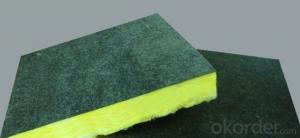Foam sandwich panels, a construction material that has been gaining popularity in recent years, is a versatile and innovative solution for various construction projects. These panels are made up of three layers: a lightweight foam core sandwiched between two thin, strong facings. The foam core provides insulation and strength, while the facings offer a durable and weather-resistant surface. In this article, we will explore the benefits and applications of foam sandwich panels in construction, as well as some of the challenges and considerations that come with using this material.
The Benefits of Foam Sandwich Panels
One of the most significant advantages of foam sandwich panels is their lightweight nature. This makes them easy to transport and install, reducing labor costs and time. Additionally, the panels can be cut and shaped to fit a variety of building designs, providing flexibility in construction projects. The foam core also offers excellent insulation properties, making these panels energy-efficient and environmentally friendly.
Another benefit of foam sandwich panels is their strength-to-weight ratio. The foam core provides structural support, while the facings add rigidity and durability. This combination results in a material that is strong yet lightweight, ideal for a wide range of applications.
Applications in Construction
Foam sandwich panels can be used in various construction projects, from residential buildings to commercial structures. They are particularly popular in the construction of walls, roofs, and floors, where their lightweight and insulating properties are highly valued. The panels can also be used for cladding, providing a weather-resistant and aesthetically pleasing exterior.
In addition to their structural applications, foam sandwich panels are also used for insulation purposes. Their excellent insulation properties make them ideal for reducing energy consumption and improving the overall energy efficiency of a building.
Challenges and Considerations
While foam sandwich panels offer numerous benefits, there are also some challenges and considerations to keep in mind. One of the main concerns is the potential for water absorption. If not properly sealed and maintained, the panels can absorb water, which can lead to structural issues and mold growth. Proper installation and sealing are crucial to prevent these issues.
Another consideration is the cost. Foam sandwich panels can be more expensive than traditional construction materials, which may be a barrier for some projects. However, the long-term benefits of reduced energy consumption and lower maintenance costs can offset the initial investment.
Innovations and Future Trends
As the construction industry continues to evolve, foam sandwich panels are likely to play an increasingly important role. Innovations in materials and manufacturing processes are making these panels more durable, sustainable, and cost-effective. We can expect to see more widespread adoption of foam sandwich panels in the coming years, as their benefits become more widely recognized.
Personal Touch: A Story of Foam Sandwich Panels
I remember the first time I encountered foam sandwich panels on a construction site. I was immediately struck by their unique appearance and curious about their properties. As I learned more about the material, I became more and more impressed with its versatility and potential applications. It’s been exciting to see how this material has been embraced by the construction industry and how it continues to push the boundaries of what’s possible in building design.
In conclusion, foam sandwich panels offer a range of benefits and applications in construction, making them an attractive option for many projects. While there are some challenges to consider, the long-term advantages of using this material can make it a worthwhile investment. As the industry continues to innovate and adapt, we can look forward to even more exciting developments in the world of foam sandwich panels.

